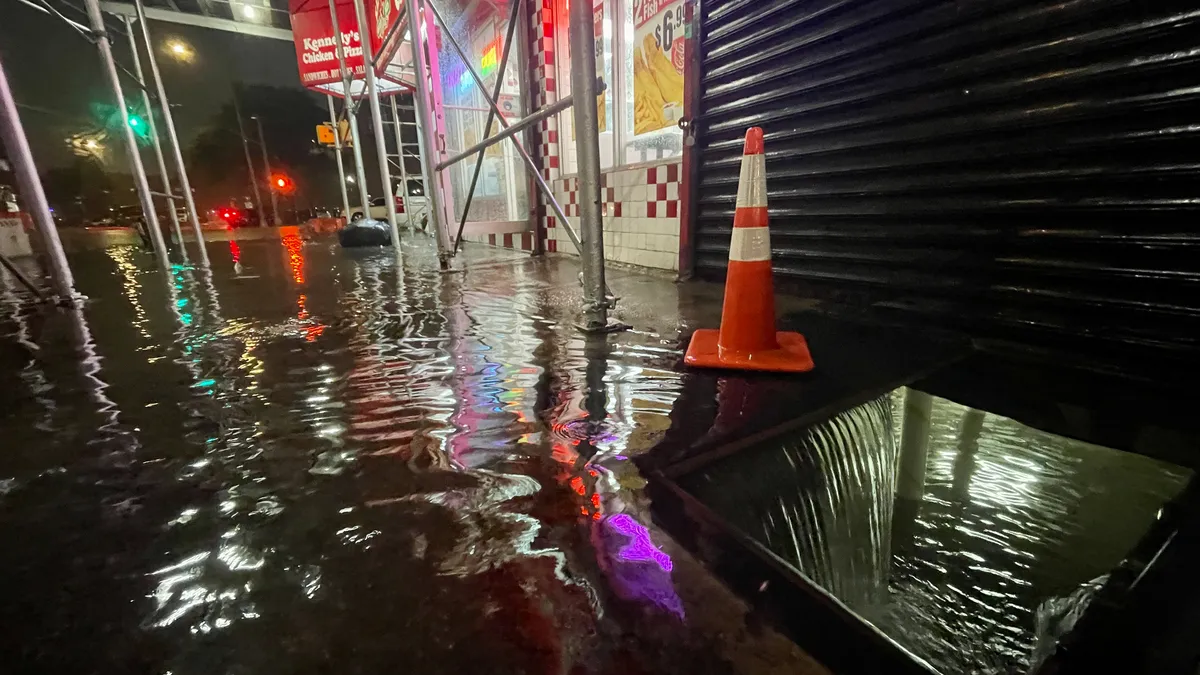Dive Brief:
- Cities should use digital tools to better understand their natural absorbency and, in turn, bolster nature-based solutions to prepare for a future with increasingly heavy rainfall, engineering and consulting firm Arup stated in its Global Sponge Cities Snapshot report released Tuesday.
- Arup leveraged machine-learning techniques and satellite images to assess land use, which helped it determine the level of "sponginess" of seven major world cities: Auckland, New Zealand; London; Mumbai, India; Nairobi, Kenya; New York, Shanghai, and Singapore. It gave New York City good marks for its overall amount of permeable surfaces, but the report also called out its noticeably uneven distribution of natural infrastructure.
- “Our green and blue assets — grass, trees, bushes, lakes and ponds — need to be quantified and valued in the same way we have treated other resources, such as pumps and concrete pipes,” the report states. It also notes that nature-based solutions can help address serious challenges like extreme heat and drought at the same time.
Dive Insight:
The concept of a "sponge city" — a city optimized to absorb and filter rainfall to mitigate flooding impacts and take care of water resources, largely by leveraging natural solutions — was popularized in China. Other cities, countries and urban designers may use different terms, such as water-sensitive design and low-impact development, to describe similar pursuits, but the need to manage water more effectively is near-universal.
"Many cities — like Portland and Seattle, New York, Philadelphia, D.C. — they've taken significant strides with finding ways to implement green infrastructure," said Vincent Lee, associate principal and technical director of water at Arup. Each of those cities has done it a bit differently, but with the same end goals of holding stormwater, improving water quality and reducing flooding while harnessing green infrastructure's other environmental benefits, Lee explained.
The Arup analysis highlights the example of New York City, which in the last decade has experienced catastrophic flooding in the wake of major storms including Hurricane Sandy and the remnants of Hurricane Ida, and it is predicted to face increasing average levels of rainfall and rising sea levels in the coming years.
Lee, who is based in New York City, credited the city for its efforts to improve access to green infrastructure. While massive green areas like Central Park get more attention, neighborhood-scale green spaces distributed across the city are incredibly important, Lee said.
Sponge city efforts are equally relevant in cities that don't get a lot of rain. While New York was the only U.S. city Arup studied, managing water is critical in rainfall-deprived Western states, both to retain it as a resource and because desert environments can be prone to flash floods, said Phoenix-based Paula Randolph, associate director of the Lincoln Institute of Land Policy's Babbitt Center for Land and Water Policy, in a separate interview. While a city like New York may have more work to do to equitably distribute benefits such as parks and good-quality water, Western cities have the added challenge of equitably distributing water at all.
Lee called Arup's research "a starting place," noting that the sponginess index could add more criteria, including "natural conditions like bedrock and groundwater, factoring in transit and [underground subways], things like that." With the latest snapshot, he added, "I think we're just scratching the surface of giving cities as much information as possible to help them make good decisions."












